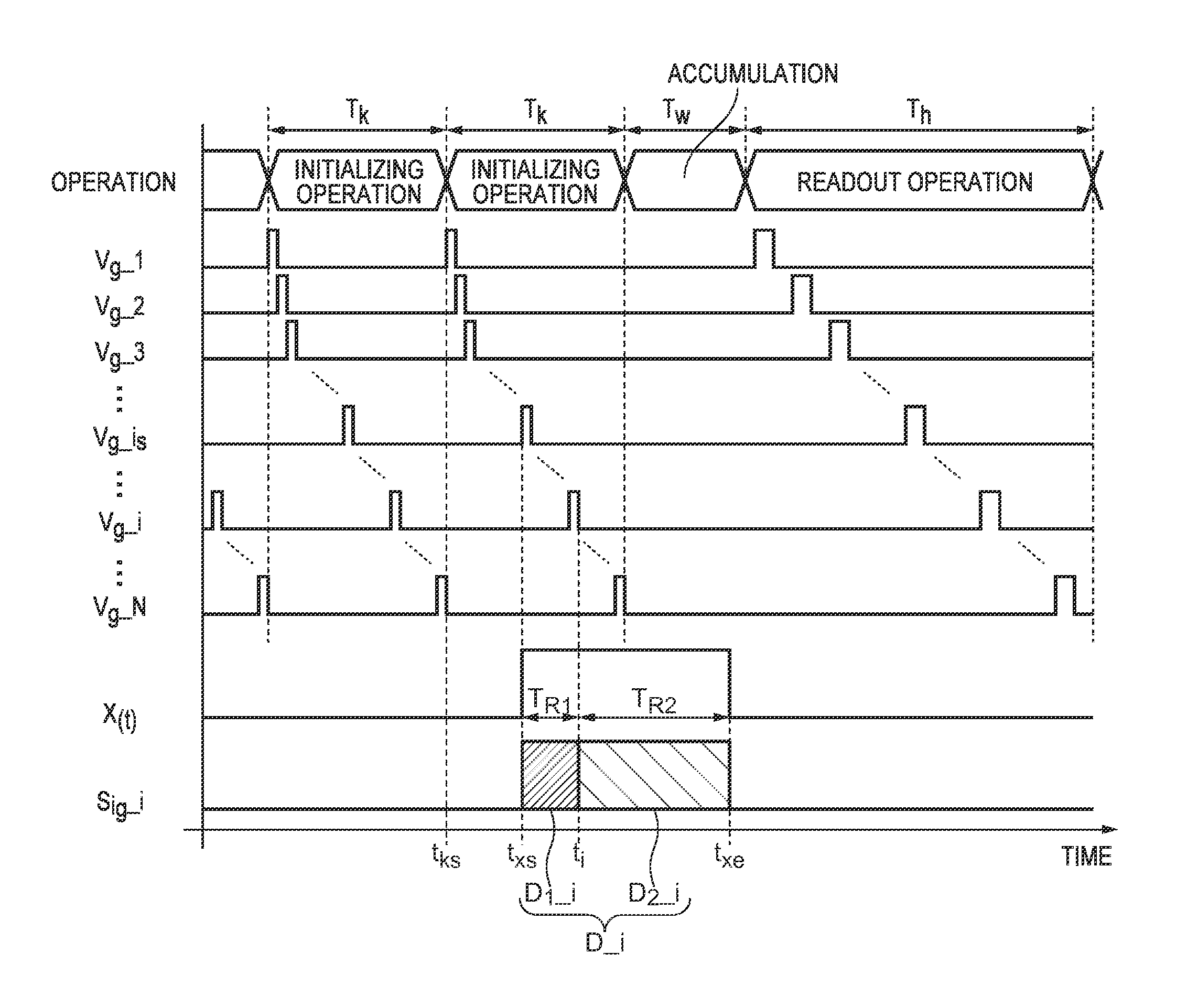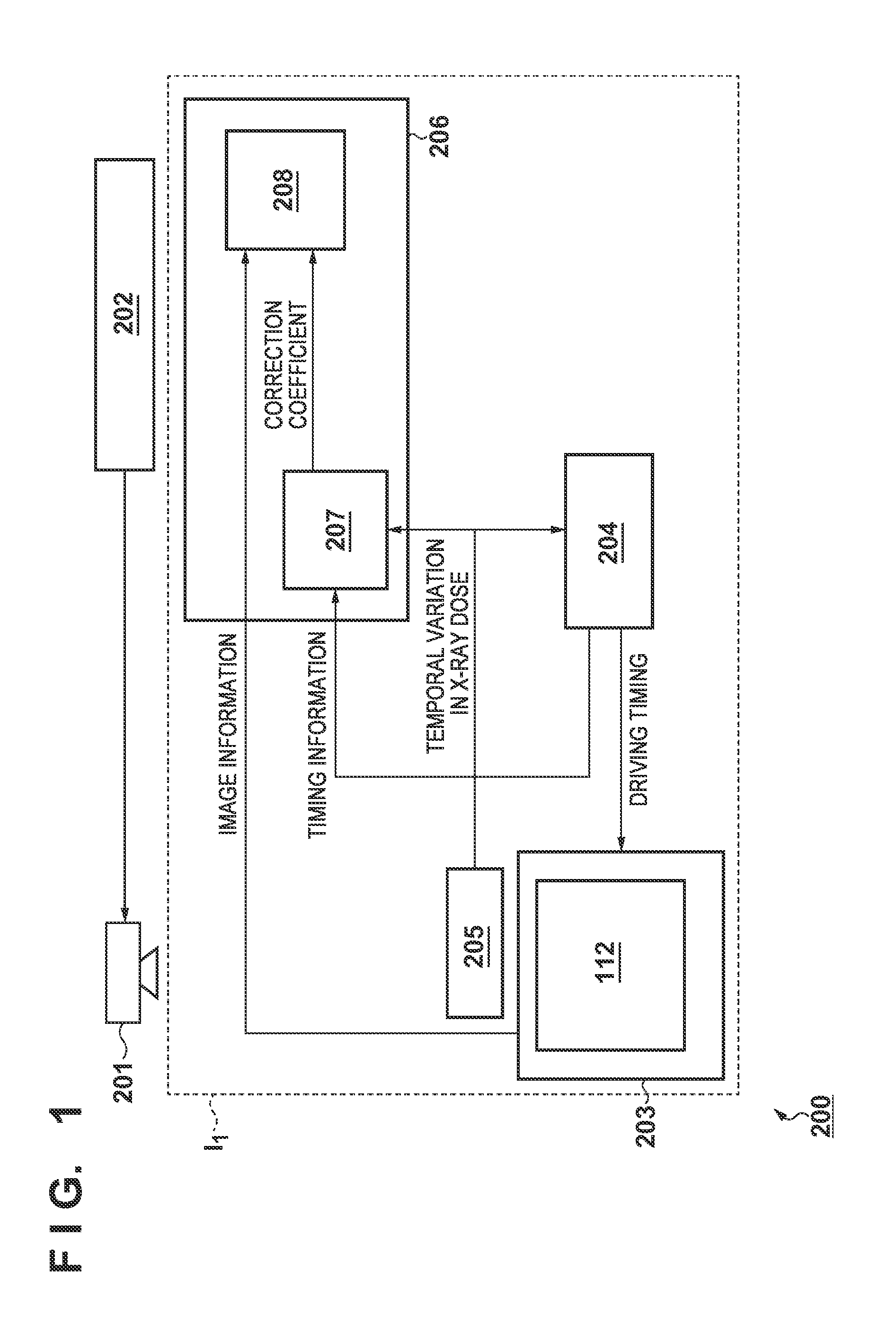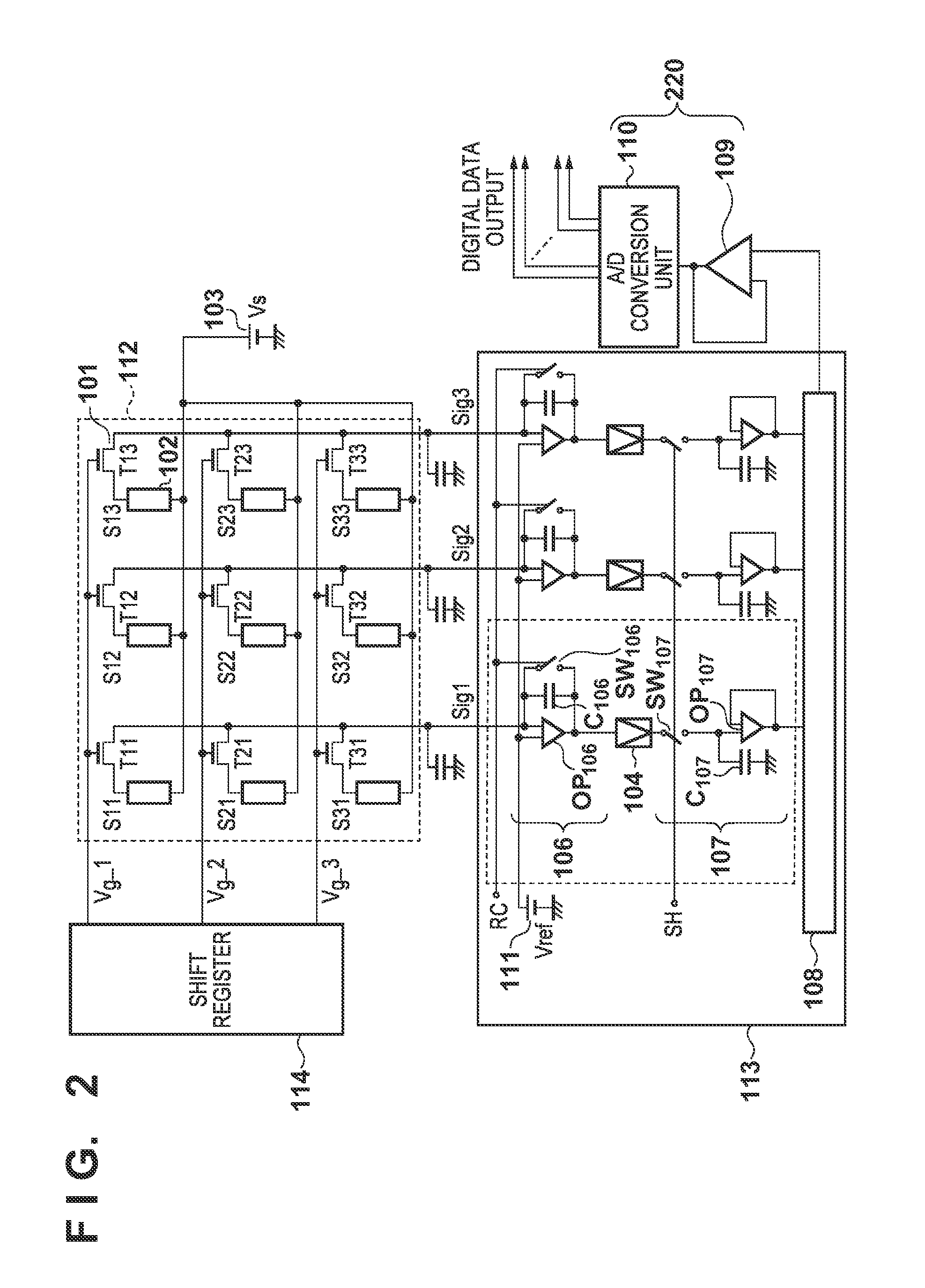Radiation imaging apparatus, method for controlling the same, and non-transitory computer-readable storage medium
a radiation imaging apparatus and computer-readable storage medium technology, applied in the direction of color television details, television system details, signal components lost, etc., can solve the problems of difficult to use a portable cassette-type radiation imaging apparatus for a long period of time, and the consumption of power by initializing operation, so as to improve the quality of radiation images
- Summary
- Abstract
- Description
- Claims
- Application Information
AI Technical Summary
Benefits of technology
Problems solved by technology
Method used
Image
Examples
first embodiment
[0019]A radiation imaging apparatus I1 according to the first embodiment will be described with reference to FIGS. 1 to 4. FIG. 1 shows a radiation imaging system 200 including the radiation imaging apparatus I1. The radiation imaging system 200 includes a radiation source 201, a radiation controller 202, and the radiation imaging apparatus I1. The radiation source 201 generates radiation in response to an instruction from the radiation controller 202. Radiation includes particle rays and electromagnetic waves such as X-ray, α-rays, β-rays, γ-rays, and cosmic rays. The radiation imaging apparatus I1 includes a sensor panel 203 including a sensor array 112, a driving unit 204 for driving the sensor array 112, a detection unit 205 for detecting radiation, and a processing unit 206 for processing a signal from the sensor array 112. The sensor array 112 is configured such that, for example, a plurality of sensors (or pixels) form a plurality of rows and a plurality of columns, and outpu...
second embodiment
[0035]A radiation imaging apparatus I2 according to the second embodiment will be described with reference to FIG. 5. Like FIG. 4, FIG. 5 is a timing chart for radiation imaging in this embodiment. The embodiment differs from the first embodiment, which performs correction by using start time txs of the irradiation and end time txe, in that it performs the above correction from the measurement result on the radiation dose. A processing unit 206 calculates the ratio between a first radiation dose R1 measured in a first term TR1 and a second radiation dose R2 measured in a second term TR2 with respect to a sensor S on the ith row based on the measurement result on a radiation intensity X(t). The first term TR1 is the term from the start of the irradiation to the initialization, and the second term TR2 is the term from the end of the first term to the end of irradiation. The radiation doses R1 and R2 may be acquired by known calculation processing based on, for example, the output resu...
third embodiment
[0038]A radiation imaging apparatus I3 according to the third embodiment will be described with reference to FIGS. 6 and 7. The third embodiment differs from the second embodiment in that it ends initialization of sensors S of a sensor array 112 in accordance with the timing of the detection of radiation. FIG. 6 is a flowchart for radiation imaging in this embodiment. In S201, the apparatus repeatedly performs the initializing operation described in the first embodiment. The apparatus repeats the initializing operation until the process advances to S202, thereby periodically initializing the sensors S. In the embodiment, the apparatus interrupts initializing operation in accordance with the timing of the detection of the end of the irradiation by a detection unit 205. In S202, the apparatus performs readout operation in the same manner as in S102 in the first embodiment.
[0039]Like FIG. 4, FIG. 7 is a timing chart for radiation imaging in this embodiment. Consider a case in which the...
PUM
 Login to View More
Login to View More Abstract
Description
Claims
Application Information
 Login to View More
Login to View More - R&D
- Intellectual Property
- Life Sciences
- Materials
- Tech Scout
- Unparalleled Data Quality
- Higher Quality Content
- 60% Fewer Hallucinations
Browse by: Latest US Patents, China's latest patents, Technical Efficacy Thesaurus, Application Domain, Technology Topic, Popular Technical Reports.
© 2025 PatSnap. All rights reserved.Legal|Privacy policy|Modern Slavery Act Transparency Statement|Sitemap|About US| Contact US: help@patsnap.com



